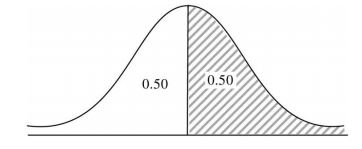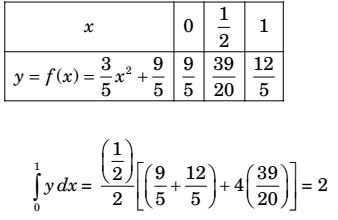Engineering Mathematics Miscellaneous
- Consider the continuous random variable with probability density function
f(t) = 1 + t for – 1 ≤ t ≤ 0
= 1 – t for 0 ≤ t ≤ 5 1
The standard deviation of the random variable is
-
View Hint View Answer Discuss in Forum
Mean(t) ∞∫-1 t.f(t).dt = o∫-1(1 + t)dt 1∫ot(1 - t)dt

Variance = ∞∫-∞(t - t)² f(t).dt
o∫-1 t² (1 + t)dt + 1∫o t²(1 - t)dt = 1/6
Stan dard deviation = √Variance =1/√6Correct Option: B
Mean(t) ∞∫-1 t.f(t).dt = o∫-1(1 + t)dt 1∫ot(1 - t)dt

Variance = ∞∫-∞(t - t)² f(t).dt
o∫-1 t² (1 + t)dt + 1∫o t²(1 - t)dt = 1/6
Stan dard deviation = √Variance =1/√6
- A nationalized bank has found that the daily balance available in its savings accounts follows a normal distribution with a mean of Rs. 500 and a standard deviation of Rs. 50. The percentage of savings account holders, who maintain an average daily balance more than Rs. 500 is ___.
-
View Hint View Answer Discuss in Forum
Given M = 500
σ = 50
P (X > 500) =?
Where X follows normal distribution
We know that standard normal variablez = x - M σ z = 500 - 500 = 0 50
∴ (X > 500) = P(z > 0) = 0.50 (see figure)Correct Option: D
Given M = 500
σ = 50
P (X > 500) =?
Where X follows normal distribution
We know that standard normal variablez = x - M σ z = 500 - 500 = 0 50
∴ (X > 500) = P(z > 0) = 0.50 (see figure)
- Match the correct pairs
Numerical Integration Scheme Order of Fitting Polynomial P. Simpson's 3/8 Rule 1. First Q. Trapezoidal Rule 2. Second R. Simpson's 1/3 Rule 3. Third
-
View Hint View Answer Discuss in Forum
Trapezoidal rule fits linear polynomial (1st order) simplex 1/3 rule fits a parabolic curve (2nd order polynomial slip on 3/5 rule fit a able curve (3rd order polynomial
∴ Correct Answer ⇒ DCorrect Option: D
Trapezoidal rule fits linear polynomial (1st order) simplex 1/3 rule fits a parabolic curve (2nd order polynomial slip on 3/5 rule fit a able curve (3rd order polynomial
∴ Correct Answer ⇒ D
- Simpson's 1/3 rule is used to integrate the function f(x) = 3/5 x² + 9/5 between x = 0 and x = 1 using the least number of equal sub-intervals. The value of the integral is ______.
-
View Hint View Answer Discuss in Forum

Correct Option: C

- If f(t) is a function defined for all t > 0, its Laplace transform F(s) is defined as
-
View Hint View Answer Discuss in Forum
According to the Laplace transformation of
f(t) ∀∈t≥0 is as F(s) = L{f(t)} = e-st f(t) dt
e-st f(t) dtCorrect Option: B
According to the Laplace transformation of
f(t) ∀∈t≥0 is as F(s) = L{f(t)} = e-st f(t) dt
e-st f(t) dt

